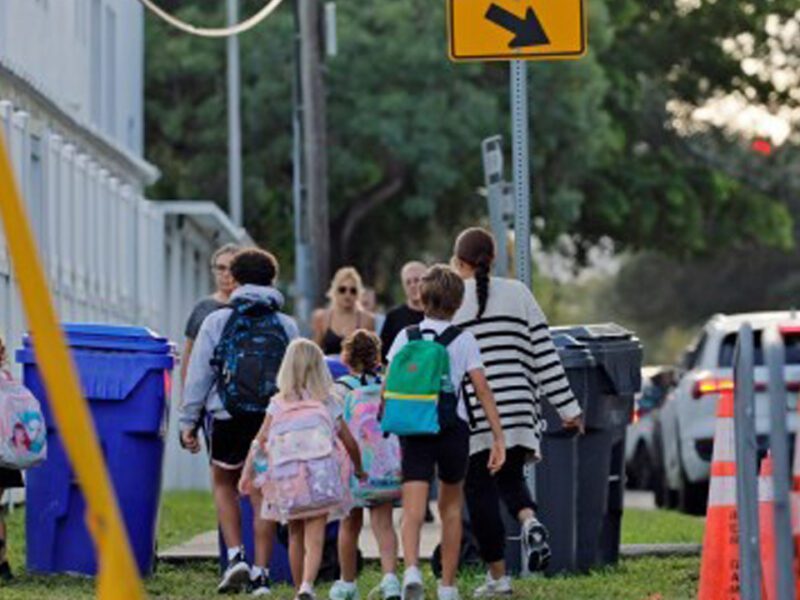
Hillsborough schools are in a $60M hole. They might ask for a tax increase.
Tampa Bay Times | By Marlene Sokol | October 5, 2021
Hillsborough County public school leaders want to go the way of other Florida school districts and use a tax on real estate to plug persistent gaps in their budget.
At a workshop Tuesday, the School Board discussed the possibility of asking voters to approve a local-option property tax and beginning a campaign before the calendar year is over.
“I definitely think we would have to start, some time in November, having conversations,” superintendent Addison Davis said. The referendum, if authorized by the board, would appear on the November 2022 ballot.
Board members heard staff proposals for a tax of 50 cents or $1 for every $1,000 in property value. The smaller levy would raise $63 million a year, which is about the size of the district’s operating deficit.
Davis, who has favored such a referendum since he arrived in early 2020, said the district could commit to spending the money on specific student programs, as Pinellas did when it first won approval for its local-option tax in 2004. Pinellas voters have re-approved the tax by large margins every four years since then.
Right now, Davis said, Hillsborough’s small elementary schools have to share teachers for non-core subjects such as art, music and physical education.
“Being able to put a full-time staff member at those elementary schools every day just allows our students to let their hair down and be involved in passionate pathways that will lead them to continue through middle and high school,” he said.
Davis and his chief financial officer, Romaneir Johnson, said they will speak individually with the board members before anything is decided.

But budget projections that Johnson shared Tuesday showed where the district is headed, with or without the additional tax. Without it, her tables showed, the district could see its financial reserves shrink to a level near or below the state-ordered minimum of 3 percent of revenue.
In 2018, Hillsborough school supporters persuaded voters to approve a half-cent sales surtax for the district, the first time they attempted such a campaign. The tax, however, can fund only capital purchases and not operational expenses such as teachers’ pay. Proceeds are being used primarily to repair and replace school air conditioners.
This year, federal COVID-19 relief funds rescued the district from near-insolvency. But state leaders have cautioned repeatedly that these short-term infusions of money cannot be used to cure a pattern of deficit spending.
Some on the School Board pointed out, as they often do, that the problem is not lavish spending but a state government that pays a base amount of $7,706 per student when the national median is nearly twice that.
Before pushing for the tax, “we really need to educate the public on understanding where we are and how our state does not prioritize education,” board member Nadia Combs said. ”That needs to be the narrative.”
Others want to see district leaders address a growing trend among Hillsborough families to seek out alternatives for their students. Johnson said the district is losing $28 million this year because more than 6,000 students are taking advantage of state-funded scholarships to private schools.
“Is it the educational experience we’re providing that we need to improve?” board member Stacy Hahn asked. “Is it the decisions we’re making around policy that’s driving families away? If you keep losing students, then how many times are you going to go back to the community and ask for more money?”
State scholarships are not the only avenue for families to leave the district.
Early enrollment figures show charter schools, which are funded by the state but operate independently, grew in enrollment by 7 percent over this time in 2020, and now serve more than 33,000 Hillsborough students.
These departures are leaving some schools under-enrolled, compounding inefficiencies. The latest five-year capital improvement plan showed that 66 district schools are at least a third empty. Of those, 14 are at least half empty.
Davis, who has spoken previously of consolidating or finding new uses for some under-enrolled schools, said Tuesday that those conversations will continue after the district hires a consultant to take a thorough look at school boundaries.
He and Johnson, meanwhile, listed other ideas to improve the bottom line.
Davis wants to shift to solar energy, as the district now pays $30 million a year to Tampa Electric.
Johnson suggested renting out school buildings after hours, advertising on scoreboards and athletic uniforms, and reducing the workforce after a careful realignment of departments and positions.
Davis said work is already under way to re-examine the district’s relationship with its vendors, and he will ask for board approval to hire a new auditor for contracts.
There was also talk of launching a district-run charter school, which would be eligible for money from the state’s Public Education Capital Outlay fund.
Board member Melissa Snively said she is strongly in favor of a district-run charter. Combs said she is firmly against such an idea.
Members Karen Perez and Jessica Vaughn reminded Davis that the district has a new citizens advisory committee on the budget that should be allowed to give input on any long-range plans.
That committee will meet for the second time on Wednesday.





